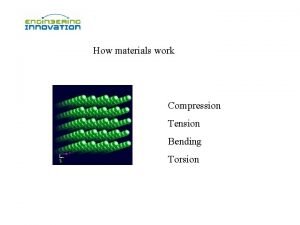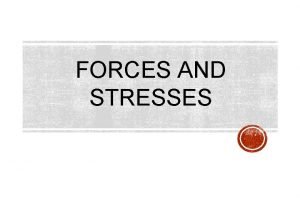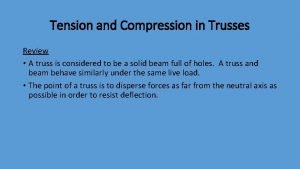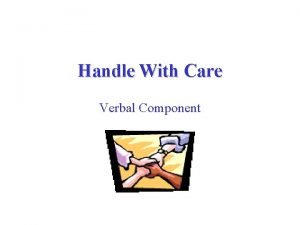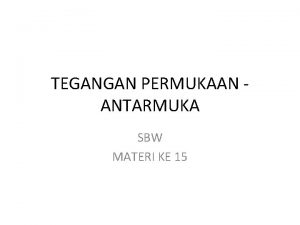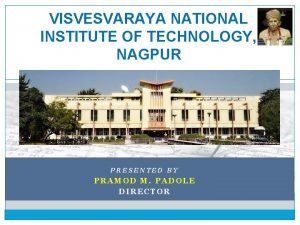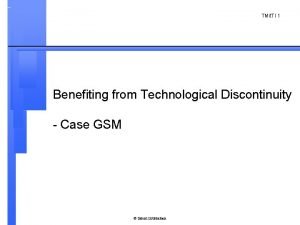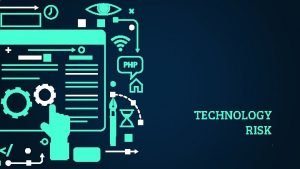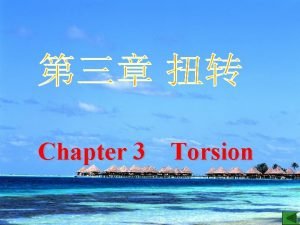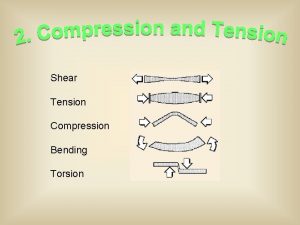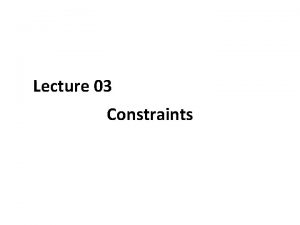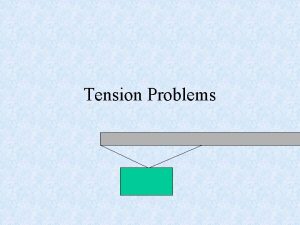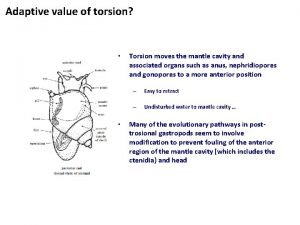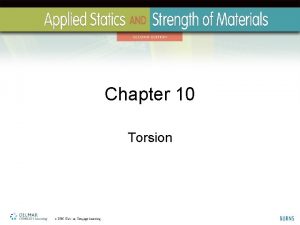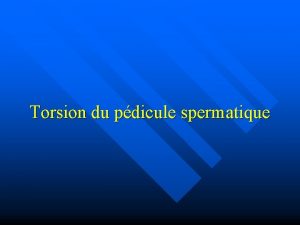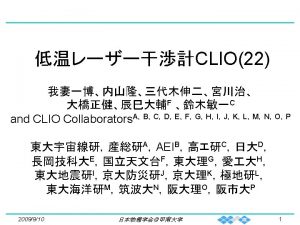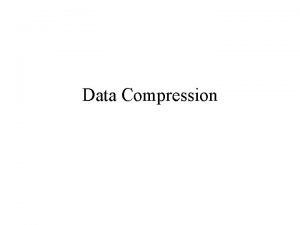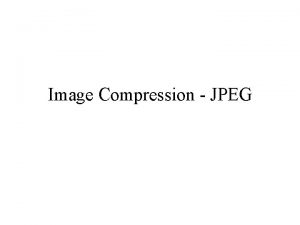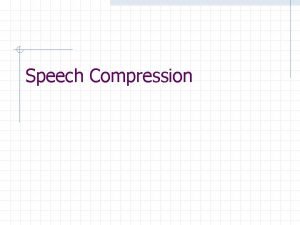The Technological World Constraints Tension Compression And Torsion
















- Slides: 16

The Technological World Constraints: Tension, Compression And Torsion

Constraints • Materials have to withstand several different forces and stresses. WHAT EXACTLY IS A CONSTRAINT? • The effect that an external force can have on a material. Can you think of any constraints that affect the way we build things?

Tension • Tension is a Reaction Force applied by a stretched string, rope, or other object on the objects which stretch it. • The direction of the force of tension is parallel to the string, away from the object exerting the stretching force.

• The amount of tension in the string determines whether it will break, as well as its vibration properties, which are used in musical instruments.

• The magnitude of the force of tension typically increases with the amount of stretching.

Examples of Tension

Compression • Compressive stress is the stress applied to materials resulting in their compaction (decrease of volume). • Usually, compressive stress applied to bars, columns, etc. leads to shortening.

Examples of Compression

• http: //dsc. discovery. com/videos/thedetonators-concrete-undertension. html

Torsion • In solid mechanics, torsion is the twisting of an object due to an applied torque.

Torsion Spring • The amount of force (actually torque) it exerts is proportional to the amount it is twisted. A torsion spring is often made from a wire, ribbon, or bar of metal or rubber, while more delicate ones are made of silk, glass, or quartz fibers.

• http: //science. discovery. com/videos/ behind-the-chunk/

Example of a Torsion Spring • A mouse trap is an excellent example of a torsion spring system.

Roadway of Tacoma Narrows Bridge twisting violently in a windstorm, Tacoma, Washington, 1940


Types of Deformation • Elastic : a temporary change in the shape and dimensions of an object • Plastic : a permanent change in the shape and dimensions of an object • Fracture : a permanent change that causes an object to break
 Tension compression shear torsion bending
Tension compression shear torsion bending Tension, compression, shear torsion worksheet
Tension, compression, shear torsion worksheet Tension and compression in trusses
Tension and compression in trusses Relevo falhado;
Relevo falhado; 500n
500n High surface tension vs low surface tension
High surface tension vs low surface tension Prt restraint
Prt restraint Tegangan permukaan zat cair
Tegangan permukaan zat cair Technological gap model
Technological gap model Scientific vs technical
Scientific vs technical Tibial torsion and femoral anteversion
Tibial torsion and femoral anteversion Marriages and families 8th edition
Marriages and families 8th edition Marriages and families changes choices and constraints
Marriages and families changes choices and constraints Visvesvaraya technological university nagpur
Visvesvaraya technological university nagpur Technological discontinuity definition
Technological discontinuity definition Technology risk examples
Technology risk examples Technological modelling
Technological modelling
